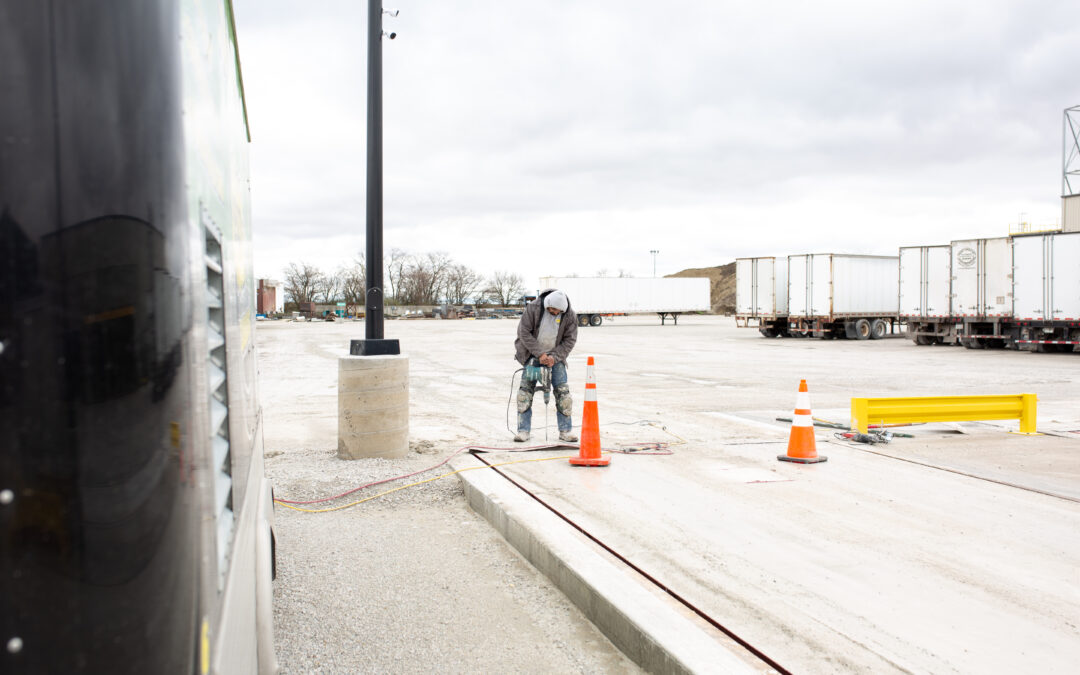At Sealtite Insulation & Slabjacking, we’ve seen it all—scorching summers, bitter winters, and the freeze-thaw cycles that Central Illinois is notorious for. If you’re dealing with sinking concrete, you might be wondering which repair method holds up best under these weather conditions: traditional mudjacking or modern polyurethane foam lifting?
Let’s break it down.
Understanding Central Illinois Weather
Here in Central Illinois, the weather is anything but predictable. In the summer, we regularly see temperatures in the high 80s and 90s, with humidity that can make concrete surfaces sweat. Come winter, we’re hit with sub-zero temperatures, snow, ice, and frequent freeze-thaw cycles. These seasonal extremes wreak havoc on concrete, causing it to shift, crack, and settle unevenly.
That’s why choosing the right repair method matters—and not just for aesthetics, but for durability and long-term performance.
Mudjacking: The Traditional Approach
Mudjacking involves pumping a heavy slurry (a mix of water, soil, sand, and cement) beneath the concrete to lift it back into place.
Pros:
-
Cost-effective for large areas.
-
Uses natural materials.
-
Established and familiar method.
Cons:
-
Heavier material can cause additional settling over time—especially when the ground freezes and thaws.
-
Longer cure time (often 24+ hours).
-
Prone to erosion and water washout in wet conditions.
-
Cracks in the slurry can allow water infiltration in the winter, leading to freeze-thaw damage.
In Central Illinois, the moisture in the soil and the extreme temperature fluctuations can shorten the lifespan of a mudjacked slab. It may solve the problem temporarily, but long-term durability can be an issue.
Polyurethane Foam Lifting: The Modern Solution
Polyurethane foam lifting is a newer method that involves injecting a high-density, expanding foam beneath the concrete. It expands quickly, fills voids, and lifts the slab with minimal intrusion.
Pros:
-
Lightweight—reduces additional stress on the soil.
-
Sets in minutes, not hours.
-
Waterproof—won’t wash out during heavy rains or snowmelt.
-
Insulative properties help protect against freeze-thaw damage.
-
Durable, long-lasting solution for harsh climates.
Cons:
-
Slightly higher upfront cost.
-
Requires specialized equipment and expertise (which we proudly offer at Sealtite).
In our experience at Sealtite Insulation & Slabjacking, polyurethane foam consistently outperforms mudjacking in Central Illinois. The foam’s resistance to moisture and temperature extremes makes it ideal for our region’s unpredictable seasons. Whether it’s August humidity or a January deep freeze, polyurethane holds strong.
Why Sealtite Recommends Polyurethane Foam
We’ve been lifting concrete and insulating homes across Central Illinois since 2004, and our mission has always been quality and longevity. As a family-owned business, we treat every job like it’s for our own home—and that means recommending solutions that work long term, not just a quick fix.
We’ve invested in top-tier equipment and trained our team to be experts in polyurethane foam slabjacking. That way, we’re not just solving your immediate problem—we’re helping protect your property from future damage.
Conclusion: Choose the Right Solution for Central Illinois
If you’re looking to level your sidewalk, driveway, patio, or garage floor, polyurethane foam is the clear winner for Central Illinois weather. It’s fast, clean, and built to last through every season.
Ready to fix that sunken slab before the next freeze? Call Sealtite Insulation & Slabjacking today for a free estimate, and let our team show you the difference that quality materials and years of experience can make.
